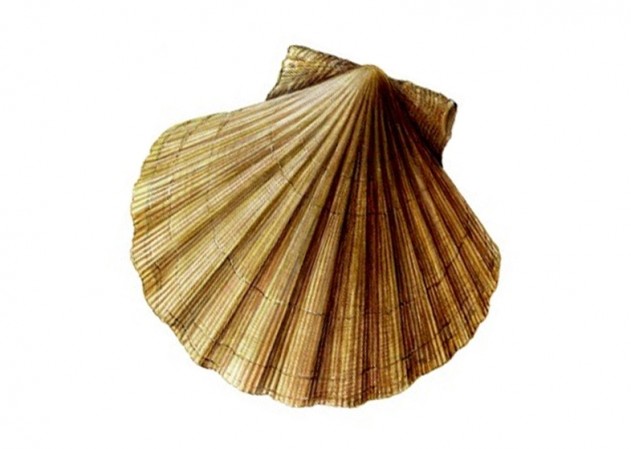King scallops (scientific name: Pecten maximus)
Scallops are mainly found at depths of 18-46 m, preferring substrates of clean firm sand, fine gravel or sandy gravel. King scallops recess into the sediment to a level with the upper shell; sometimes they are partially covered.
Like other bivalve molluscs, scallops are filter feeders removing natural phytoplankton (microscopic algae or plant cells) and organic particles from sea water as it passes over the gills. The gills have the dual function of respiration and feeding. They act like fine, intricate nets that trap food particles from the water.
Life Cycle of King Scallops
Scallops spawn in the summer and they may spawn more than once in a season. They are hermaphrodite; the proximal white part of the gonad is the male testis, the distal part of the gonad is the ovary which is bright orange in ripe scallops. Sperm are released before the eggs and this helps to prevent selffertilisation. Fertilisation of the eggs takes place in the sea and the resulting larvae drift in the plankton for around 3 to 6 weeks, feeding on microscopic algae. When mature, the larvae sink out of the plankton, attach to stones, empty shells, bryozoans, filamentous algae and hydroids by their byssal threads and develop into the first ‘immature’ adult stage (called spat or seed) which are 0.25-0.4 mm shell length. Later, they detach again to live on the seabed. They remain mobile as adults and can swim short distances by clapping the shell. Recruitment can be very variable from year to year and this has implications in the collection of spat from the wild for commercial cultivation.
Read more in Spearfishing Regulations Section>>

